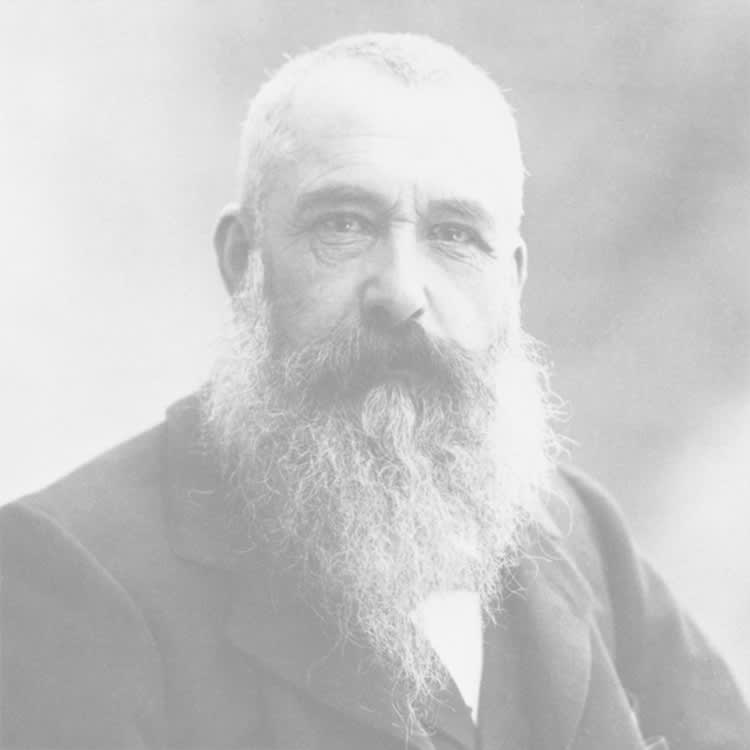CLAUDE MONET 1840-1926
Claude Monet was a French painter known for his pioneering role in the development of Impressionism, whose works are exhibited at the HELENE BAILLY gallery. The artist’s inimitable style is best remembered through the vivid depictions he produced of his flowering garden in Giverny. Monet, along with his peer Pierre-Auguste Renoir, were concerned with conveying atmosphere and light with broken brushstrokes and complementary colors. Some of his best known works include Water Lillies (1919), Impression, Sunrise (1872), and Rouen Cathedral at Sunset (1893). “When you go out to paint try to forget what object you have before you—a tree, a house, a field or whatever,” the artist once explained. “Merely think, here is a little square of blue, here an oblong of pink, here a streak of yellow, and paint it just as it looks to you.” Born Oscar-Claude Monet on November 14, 1840 in Paris, France, he learned to paint en plein air as a teenager in the coastal town of Le Havre from the older artist Eugène Boudin. In 1859, he became a pupil in the Paris studio of Charles Gleyre, where he met Renoir, Alfred Sisley, and Frédéric Bazille. The first Impressionist exhibition in 1874, caused a public outcry, with the art critic Louis Leroy deriding the group in print as “impressionists.” Over the following decades, public and critical opinion changed towards the style, making many of the original members wealthy. The artist died on December 5, 1926 in Giverny, France at the age of 86. In 2019, Monet's painting of haystacks, Meules (1890) broke a new auction record for the artist when it sold for $110.7 million at Sotheby's New York. Today, Monet's works are held in the collections of the Hermitage Museum in St. Petersburg, the Musée d’Orsay in Paris, the National Gallery in London, The Museum of Modern Art in New York, and the Rijksmuseum in Amsterdam, among many others.
